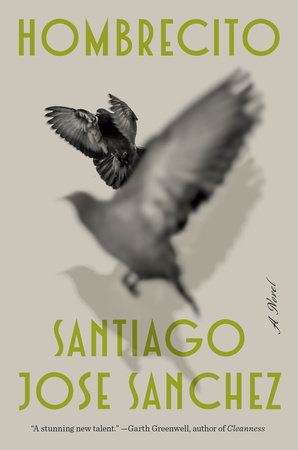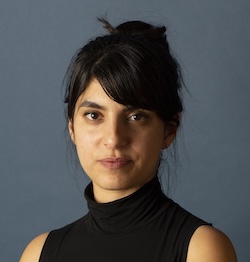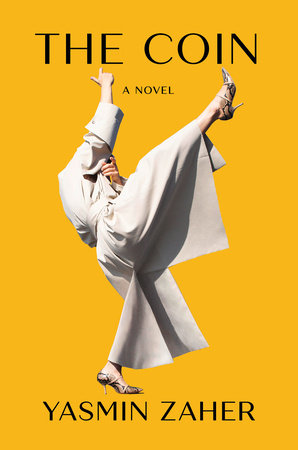While reading a debut novel, oftentimes, there exists a momentary thrill of forgetting about craft. Instead, it can feel as if these writers grew up alongside their stories—in parallel lines and lives, naturally accumulating sentences with every inch they grew. There is a tender, literary innocence and a certain freedom from expectation that comes with debut novels. There is a freshness and urgency in the voice that subconsciously emerges from the story that perhaps they’ve been waiting their whole lives to tell. But, of course, every writer has their unique process and their own journey to find the right words in the right order. And debut writers are not to be underestimated for their work behind the scenes—the time they’ve spent harnessing their characters’ emotions into comprehensible sentences and their plot structures into legible timelines. They’ve thought carefully and revised thoroughly and have arrived this summer to tell the tale.
As Matthew Salesses writes in the article “25 Essential Notes on Craft”: “Craft is about who has the power to write stories, what stories are historicized and who historicizes them, who gets to write literature and who folklore, whose writing is important and to whom, in what context.” These three debut writers are using craft in this exact way—all are currently changing the literary landscape, shapeshifting it right in front of our eyes. They have each written an incredible first novel and now are unveiling the gears behind their experiences.
This interview features the following writers who have published debut novels this summer: Santiago Jose Sanchez, the author of Hombrecito; Uchenna Awoke, the author of The Liquid Eye of a Moon; and Yasmin Zaher, the author of The Coin. Sanchez, Awoke, and Zaher spoke with me about the highs and lows of the writing process, their evolving relationships with the novel as a form, and their experiences publishing their first books.
Santiago Jose Sanchez: I began writing Hombrecito almost ten years ago with a short story that imagined a young boy, in Colombia, waiting for his mother to pick him up after school. I gave him my name, a life closely parallel to my own, and though I didn’t remember living any such moment in the classroom, it felt like the sentences were coming straight from the corners of my own past. I continued writing from his perspective, treating each story as a portal into the most intense moments of his life. The first few pieces focused on his mother’s decision to leave his father and their homeland, and from there, the project grew into a nonlinear network of pieces that mapped a fictional life that was and wasn’t mine. With each iteration, the Santiago of these stories, and then my novel, became an entity separate and distinct from me. From time to time, I considered changing his name, distancing myself from his story, but ultimately I chose to own the connection between us. By blurring the lines between fiction and reality, by investing myself so deeply in the character of Santiago, I hoped to create something that was both highly personal and universally resonant: an honest exploration of the complexities of family, culture, and selfhood, written with intensity, empathy, and grace.
Kyla D. Walker: Did you write Hombrecito with a general outline or ending in mind?
SJS: There was no general outline or ending in mind. I didn’t know I was writing a novel; I was simply exploring and creating, figuring out what I wanted to capture from my experience with fiction. I wrote out of order, from different points of view—including my mother’s—collecting scenes, scraps, and stories. I trusted my curiosity and instincts, letting the stories unfold in their own way, without forcing them into a predetermined shape. In one, I followed Santiago as he briefly joined the Boy Scouts to get closer to a crush. In another, I was in New York City, following him during the two weeks before his first time hooking. Continuity, the very thing my life had lacked, didn’t concern me. Some stories were short, no more than a page or two, while others spilled past ten thousand words. Some came together in just a few days, others took years. Again and again, my curiosity took me back to the fractures that had shaped my life, pulling me towards the energy that came from the deep gaps between my childhood, adolescence, and young adulthood—between my relationships with sex, my mother, and my motherland. It was the in-betweenness of my experience that I wanted to capture.
KW: How did you decide on the structure (with its shifting POVs) for the novel?

SJS: The structure of Hombrecito emerged organically once I had the whole network of stories in front of me. Two pieces fell into place right away: a story that follows Santiago as a young boy waiting for his mother to pick him up from school in Colombia, using definitive articles to refer to Santiago and his family as the boy, the mother, the father, and the brother; and the only story from the mother’s perspective, so distinct from the rest of the novel that it had to be placed at the end, giving her the final word.
Between these bookend chapters, a three-part structure took shape in a more conventional first-person perspective: Santiago as a child, as a teen, and as a young adult. The first section was tender and heart-breaking, capturing the raw, beautiful vision of the world through a child’s eyes. The second was quietly angry, full of sexual exploration and playful riskiness. The third was more tentative, exploring different paths and attempting to heal and build a life.
This linear structure also revealed a homecoming arc: Santiago’s story begins with leaving Colombia as a boy and returning with his mother as a young adult. Within this outer frame of my family’s migration, I found the space and freedom to tell my story in my own way, at the level of imagery and subject matter. With each POV shift, I wanted the reader to sink deeper into Santiago’s consciousness, an embodiment of his fractured relationship to time, memory, and stories. The gaps between chapters and the sharp focus on singular scenes felt true to the living a life split between two countries. Structuring the book any other way would have felt artificial. To own how I’d written the book was to own myself.
KW: What was your favorite part of the writing process for this novel?
SJS: The rush of devotion, pouring my heart and soul into a story. The discipline, showing up consistently and with faith, because as long as I kept coming back, something meaningful would emerge. The moments of adrenaline when the words struck a raw nerve, and I cried in public or in my bedroom. But more than anything, the comfort of knowing that no matter where I went, I was never as alone as I thought I was—Hombrecito was always with me.

Uchenna Awoke: The Liquid Eye of a Moon started as a short story published in Elsewhere Lit in 2017 with the title “Shallow Grave.” “Shallow Grave” is the story of a childless woman who was ostracized in her community for killing a god incarnated in a tortoise, and when she passed, her church congregants hired foreigners to bury her because they would be ostracized if they did it themselves.
KW: What did the path to becoming a writer look like for you—and what were some of the hardest challenges you faced?
UA: Growing up in a rural community, our world wasn’t as digitalized as today’s world. No computers, no cell phones, no social media. Some of us didn’t even have family TV. But we had books, mostly crime thrillers by James Hardly Chase, and the Nigerian Pacesetters series. Friends would exchange novels and have conversations about what they had read. I was inspired by the way their authors crafted stories that captivated readers. I was challenged to write like them, but writing is time-consuming, and one of the difficulties I faced was finding time to write while struggling with a meagre income and family bills. Finding the right publisher for my work posed another kind of challenge, although my fellowships at MacDowell and Vermont Studio Center provided me with the opportunity to network with other authors for insights into the publishing process, but that was after I had sent out dozens of query letters and got no response. I feel like my manuscript was waiting to be claimed by one of the best agents in the business—Annie DeWitt of Shipman Agency.
KW: Did you write The Liquid Eye of a Moon with an idea of how it would end?
UA: “Shallow Grave” helped to create plot ideas for The Liquid Eye of a Moon, so I definitely created the plot skeleton from a back story. As I continued to build the plot, I wrote short paragraphs for the various narrative arcs. Often, I write different arcs in the form of short stories. Mostly I have only a vague idea of how it will end, and this could change depending on the character arc.
KW: What usually comes to you first for a story: the idea or the character/voice?

UA: The Liquid Eye of a Moon is a character story. For me, the character drives the plot, the structure, the whole story.
KW: How did you decide on the structure of the novel?
UA: I decided on the Three Act Structure in which I basically established Dimkpa’s ‘ordinary world’ in Oregu village: his dreams of returning to school when his father becomes village head and building a fitting tomb for his aunt Okike. His father losing the position sets the story in motion. The threshold is crossed when Dimkpa realizes that he must make his own destiny. Once I got the story moving from the plot point one through to midpoint and plot point two, the resolution came seamlessly.
KW: What inspired you to write The Coin?

Yasmin Zaher: Living in New York City and reading The Passion According to G.H. by Clarice Lispector. I wanted to try to write without inhibitions.
KW: How did you decide on what structure the novel would take?
YZ: Because I wrote without any notion of structure, I had to excavate it from the material. I started with just recognizing a beginning, middle and end. Then, inside those categories, I created clusters of scenes that should go together, because they had their own internal structure and logic. The hardest part for me was the beginning, because there were so many ideas to introduce, but I wanted to keep it light.
KW: Did the themes/content of The Coin help inform its structure of short, fast-paced chapters?
YZ: I think it’s more connected to my short attention span. Each chapter was probably written in one sitting, and a page or two is probably as much as I can do in one sitting. I can see now that the short chapters create momentum in the book, that it resembles our contemporary rhythm, or the rhythm of the city. It wasn’t intentional, I try to just follow my intuition while writing, and sometimes decisions are unintentional but they work out because they’re authentic.
KW: What was your favorite part of the writing process for this novel?

YZ: The first draft. There is no greater feeling for me than writing a sentence and being surprised by it. It’s like I’m hanging out with myself and I’m enjoying it.
KW: What did revision look like for this project?
YZ: Tortuous, frustrating, annoying. Six long years of revision. It felt like working on clay that had already dried, there were problems that didn’t want to budge. Sometimes I felt like I was going backwards, and I probably was. It’s not just about making changes, it’s also making changes to the changes, and sometimes changing back to the original.
KW: How has your writing process or relationship to your writing evolved over time?
YZ: I’m less intimidated by the page. Before, I had ten million rituals before I could start writing, and now I only have a million.
The post 3 Debut Novelists Reveal How Their First Books Came Together appeared first on Electric Literature.
Source : 3 Debut Novelists Reveal How Their First Books Came Together









